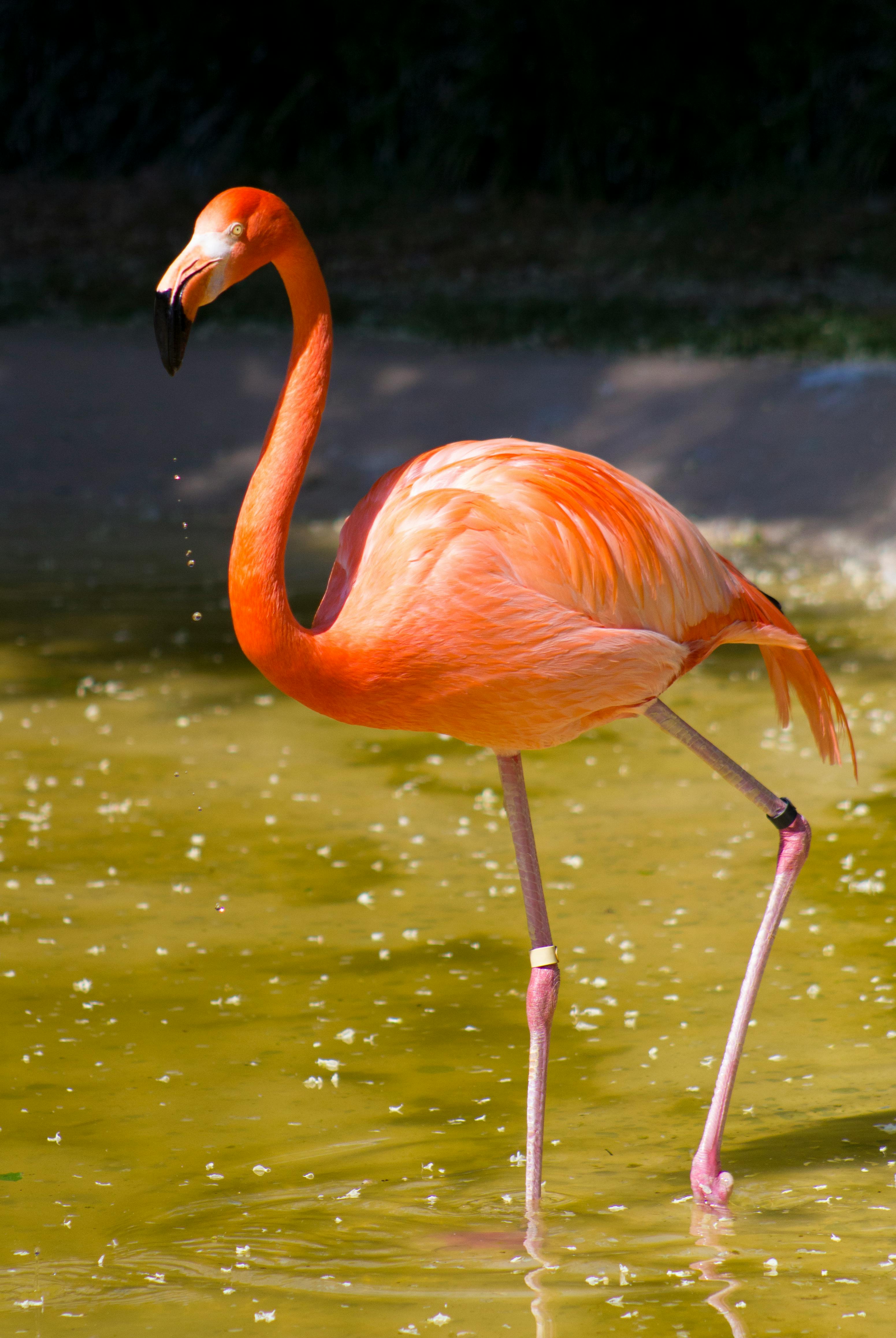
The feathers are also initially gray, but will gradually be replaced by the pink, adult plumage as the flamingo ages and incorporates carotenoid compounds from its diet into new growth. Both their legs and bill are dark gray in color, and only become pink as the bird matures.

Young birds are covered with a downy-type feather when they first hatch. Because there is no difference in coloration between the sexes, the bright pink coloration is not likely to be any type of sexual signal, though some researchers suggest it may function equally for both sexes in selecting a mate as a sign of fitness due to overall nutrition status. The legs are bright pink as well and end with pink, webbed feet. They feature pale irises and a pale bill with pink and black on the tip. Adults have primarily pink plumage with black flight feathers only visible in flight. Otherwise both sexes are uniformly colored.

Sexual dimorphism is present in that males are slightly larger than females, and females obtain their adult color slightly earlier than males. This reversal is largely attributed to flamingos' method of feeding by submerging their heads upside-down. Thus when it eats, the upper mandible moves as opposed to the lower, which is completely reversed from all birds and mammals. Flamingo's lower mandibles are larger than the upper, which is not rigidly attached to the skull. In contrast to other birds, flamingo's bills are essentially reversed. Their large bills consist of layers of horny plates used to filter out prey from the water. The bill is uniquely adapted for filter-feeding, and its shape is not shared among any other family of birds. Flamingos will often rest their head on their body in order to avoid fatigue in the neck muscles. They are most well-known for their bright pink coloration and in fact, the word "flamingo" derives from old Spanish for "flaming" or "red feather." Individuals have long, graceful necks and legs which in proportion to body size are the longest of any bird. Greater flamingos are one of the larger members of the Aves class with a wingspan measuring 1.5 m wide, standing 1.2 m tall, and weighing 2.1 to 4.1 kg. Flamingos show little to no site-tenacity and don't often return to previous flocking sites, or to their birth locations. In colonies of such high density, occasional food shortages arise and flocks will perform short migrations in search of greater food resources. Habitats are nearly always coastal, but they have been known to move inland to lagoons or volcanic lakes. These habitats are often located near larger bodies of water such as coastal areas, sea inlets, rivers, and open lakes. They are harsh environments where filter feeders benefit from reduced competition and predation while at the same time being able to take advantage of the abundant food sources. Hyper-saline estuaries are the preferred habitat. These large mud flats are usually located near a food supply. They tend to occupy large mud flats where the loose mud can be easily formed into the mounds that they use as nests. ( "Focus on Flamingos", 2010 "Tour du Valat", 2010 Allen, 1956 Fer, 2006 Roynesdal, 2007)įlamingos live in large colonies, oftentimes numbering into the thousands of individuals. Flamingos have been seen in the southern United States, though they are not as prolific as in the more southern latitudes. The range of Caribbean flamingos, a subspecies of Phoenicopterus ruber, covers the northern shore of South America, most shoreline around the Caribbean Sea, as well as nearby islands in the Caribbean and Eastern Pacific. Specifically, the range of greater flamingos extends across the entire shoreline of Africa, the Mediterranean Sea, parts of Asia and India as well as southern United States, the Caribbean, and Yucatan Peninsula where there are warm coastal habitats. Depending on the authority involved, there are up to six distinct species, each with its own range and geographic dispersion.

Flamingos are found on all continents except Antarctica and Australia.


 0 kommentar(er)
0 kommentar(er)
